The Japanese is still one of the worst people in the world.A look at their diet shows how we can benefit from it.
If we want to lose weight, we usually start with solid diets that are not carried out within a few days or weeks for all strict rules.In fact, it is very simple: let's look at the worst people in Japan.
There they respect food and enjoy it.
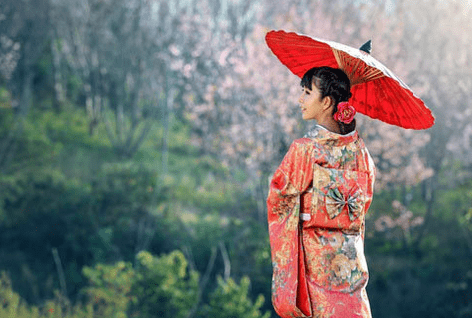
japanese diet
Travel to Japan.Product Selection
A lotsquirrel: The main components of the Japanese diet are fish, rice and vegetables.In addition to soy and fruits.
When it is examined more closely, this
- Rich in protein,
- low
- And gluten -free diet.
- FishIt contains a lot of omega-3 fatty acids, which are beneficial.
- VegetableThey contain the necessary vitamins and fill the stomach thoroughly.
- Do not be afraid of carbohydrates: At first glance, with the phobia of carbohydrates everywhere, it seems that an incredible amount of white rice is renewed in Japan.Obviously, this flaw is not very harmful to Flae.RiceIt does not contain gluten and contains less fat.
- Soupand fermented dairy products.They did not eat much in Japandairy products.
- DespitecerealsSometimes they are used as pasta, for example, not the main food product.
- MeatThey eat much less than fish.
- But like the JapaneseEnzyme productsLike Miso or Kimchi.They contain probiotics that are useful for intestines.This plays a major role in weight loss.And one more thing we can adopt from the Japanese: they eat too much soup for breakfast.
Travel to Japan.COOKING METHODS
Food in Japan is mainly steamed, stew or grill.All such preparations are made almost lean.
Of course, for example, a popular tempo also has fried foods, but then it is only used as a garnish in small amounts.The presentation and design of the food in Japan is also important.Asian products are useful, delicious and contributes to weight loss.
Japanese for mindful eating
In Japan, food is considered an independent action you need to concentrate.Food should be eaten slowly and consciously and enjoy it.Therefore, traditionally, “by the way” or “go” is not invincible.So, neither during walking nor on the subway nor during work, nor watching a TV.Of course, this is not forbidden, but in fact a diet should be performed consciously, especially when losing weight.With this food absorption method, a feeling of satiety is felt.Since working days and school days in Japan can be too long, it also means that there are longer breaks for food.MoreoverportionsLess in Japan.You will not see a plate overloaded with food.
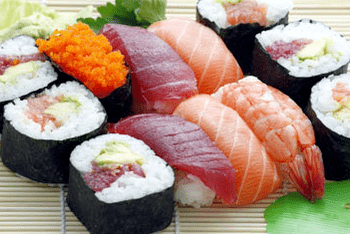
Weight Comes with Fast Food
Slow Food (Slow Food)In the trend in Japan.If you imitate this, you can deliberately lose weight to starve.However, it should be noted that it appears more and more from the west of new trends in Japan: Fast Food.Previous habits in food disappear ...
This has the consequences: The Japanese also heals when they say goodbye to their traditional food!However, in 2009, Japan took decisive measures against overweight reasons.Medical tests are carried out regularly in all municipalities and large companies.Companies should pay more for health insurance if their employees have overweight or high blood pressure, high blood lipids or increased blood sugar.Considering such measures, many Japanese prefers to return to Miso-Supa with fish instead of toast in the mornings.
How long does the Japanese diet last?
Time and possible weight loss may change.The Japanese diet should be observed for at least four weeks.This time it is enough to encourage fat burning.There are people who lose3with8Kilogram in four weeks with diet.The results can be further enhanced if you start a fitness program.
- During the diet, plenty of vegetables and fiber are consumed.The diet plan includes:1200 caloriesdaily.
- The food offered is predominantly rice, fish and vegetables.
- Drinks: Abundant green tea and water.
- Make sure your meals are prepared fresh;Do not use ready -made foods.
- Do sports or do durability training.
- Plan enough time to cook.
See your doctor.- Any change in diet can lead to disease.The reasons are mostly mental in nature and are due to low calorie intake.If symptoms persist, contact your doctor.
Benefits of the Japanese diet
Japanese dietIt is a healthy mixed diet.Fresh products and a balanced meal composition are very careful.
Disadvantages of the Japanese diet
- Low calorie intake can cause hunger and fatigue.For overweight people, total calorie intake can even be very low.
- For those who are used to eating fast food, preparing fresh food can be boring in the long run.
- Spontaneous visits to cafes or restaurants with friends are an option.
- Diet requires too much durability.
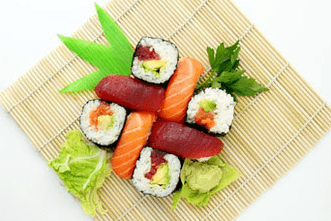
However, those who successfully complete the Japanese diet will be rewarded with more weight loss.
If you want to see great success, create a sports program.Make sure you consume enough protein.Otherwise, you cannot create muscle mass.You lose muscle in the worst scenario.Strenuous sports and other heavy loads should be avoided.
Japanese diet.Menu
All foods should be fresh.The meals are prepared well and you can play with colors.Eating and enjoying eating (slow food) is also very important.
Breakfast
- 1 Latch
- 1 cup miso.This typical Japanese soup gives a lot of energy, but is low oil.In the meantime, fish juice, tofu, moss, Miso (flavored soy paste) and green onions.The recipe below!
- 1 cup green tea
Evening meal
- 1 plate of black (raw fish with rice), with soy sauce
- Mushroom noodles cup
- 1 apple
- A cup of green tea
Evening meal
- 1 Sashimi (other fish), soy sauce and basabi (be careful, this paste made of water is very spicy)
- 1 cup of full grain rice
- 1 orange
- A cup of green tea
In addition, exercises are recommended (cycling or cycling) and pleasure of simple, small things.
And now about "good old times" - let's make a trip in 1975
The Japanese is one of the healthiest people in the world with the largest long life expectancy, which remains harmful as a result of sample nutrition.Currently, Nippon.com has published a study that Japanese justified by feeding the causes of good health.Nutrition experts have examined the Japanese food habits for more than half a century.Conclusion:In 1975, Japanese kitchen habits were appreciated with the highest evaluations.
1975 Japanese diet was considered a diet model
For decades, Japanese culture has been influenced by the Western world, especially the Western power habits that have spread to the country, and at the same time brought with them diseases such as atherosclerosis and diabetes.In the study of the Japanese diet on mice for decades, the study was tested for decades - in 2005, 1990, 1975 and 1960.
Conclusion:Mice have been the best health status with a diet plan in Japan since 1975.This group of mice had the lowest diabetes and healthy liver risk.
From where:The average Japanese diet plan included a large vegetable, fruit, algae and seafood this year.In addition, in 1975, diet was raided with various fermented spices and a wide variety of herbs.In addition, in Japan, fruit juices and dessert non -alcoholic beverages were not as common as today - both drinks are considered to be harmful for health.
After 48 weeks, researchers found that mice reinforced by the 1975 Japanese diet were older and had a better memory than mice observing the 2005 diet.
But is it possible to convey these results to people?A study by the Committee on Research at Tokhoki University in Sendai, Japan, “Research Ethics Committee” Der Tōhoku Uni, Sendai, 1975 proved that the diet has the same beneficial effect on humans.A group of participants following the 1975 diet over a 28-day period exceeded the indicators of those following the 2005 food plan.The first group had lower cholesterol and a lower risk of diabetes.In combination with a three-times-a-week workout, the 1975 diet also reduced stress and increased endurance in a group of participants aged 20 to 30.In general, Japanese-style nutrition can help reduce the level of lipids in the blood and visceral fat, which are considered harmful to health due to their metabolic activity.
In summary, we can say thatJapanese 1975's powerCompared to modern nutrition in Japan - and typically for the West, today, food habits are more useful in many ways.This is a healthier lifestyle and nutrition, long -term diabetes, reduces the risk of cholesterol, reduces blood lipids and visceral fats, weight loss is a positive side effect.
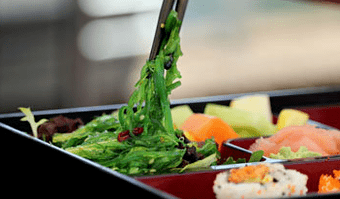
The 1975 diet contributes to weight loss with regular physical exercises.
- Diversity:The daily menu usually consists of many small different dishes served with soup and rice instead of a large main course.
- Preparation:The three most popular types of food prepared in 1975 were boiled, steamed or raw, and also grilled.Freedom temperature and roasting were less used.This form of preparation is the result of the fact that the most important nutritional values disappear in the heat.For example, oily fish such as cods contain important omega-3 fatty acids.After frying, it contains only one third of the first oil compared to raw fish such as Sashim.
- Contents:The 1975 diet is especially rich in fruit, algae, mushrooms and green tea, especially soybean products, seafood and green and yellow vegetables (including rnicons).Eggs, dairy products and meat were consumed in 1975, but only consumed in medium amounts.
- Spice:For taste, soy sauce, vinegar and love, fermented spices and fish juice are used instead of salt and sugar.
Soup miso- This is a rapidly preparing and very aromatic Japanese national dish.The main recipe contains very few materials - you can enrich it as you want.Miso-Sup is usually eaten not for breakfast in Japan, but also as a snack or garnish.With filling, soup becomes the main course.
As the basis of a soup, you will only need two ingredients:
Mizopasta:This spicy paste consists of soybeans and - depending on the variety of various grains such as rice or barley.The ingredients are salted and fermented in barrels with the help of Coji's multi -name mold.Light and dark, sweet and sharp miso pastes.Therefore, the choice of diversity has a great effect on the taste of Miso soup.It is considered very useful in the function because probiotic contains lactic bacteria during fermentation.Dasha:Japanese fish juice, seaweed battle and dried bonito stamps (mackerel or tuna type: “katsuo-bushi”-“katsuo-busi”).If you want to cook Misto vegetarian soup, you can use Maitaka or Enoki mushrooms instead of dried shiitaka and probably bonito stamps.
Miso Soup: Basic Recipe
For four small parts of Miso soup, you will need the following materials:
- 750 milliliters Dasha
- About two or three tablespoons of Miso-Pasta
Use your chosen miso-post: In addition to soy, shiro-Miso also contains rice and has a very soft and sweet taste.Darker Miso varieties such as Genmai or Hatcho Miso are more spicy.
How to cook miso soup
-
Heat Dasha's broth - but do not cook.
-
Sprinkle the Miso-Pass from the sieve and mix well with the broth.First, use only a part of the amount, as Macun Miso has a very salty taste.Try the soup and add more to Miso pastes when necessary.
-
Add the materials you selected in a mistake in a few minutes before serving.Serve the finished soup in the bowls.Meanwhile, in Japan, soup is eaten with sticks for food and then the broth is drunk from the cup.
Miso Soup Recipe: Additives and Spices
You can prepare different materials for your soup.In Japan, the fact that the materials are cut equally is very careful - so the finished soup looks very nice.Here are a few examples to enrich your soup Miso:
- Baked rice or paste (for example, noodles of buckwheat dogs)
- Tofu
- Onion or green onion cut into thin rings
- Mushroom, finely chop
- Kohlrabi, finely chop
- Snow sections
- Leaf spinach, Park Choi or Mangold
- Roasted vegetables such as broccoli, pepper or carrots
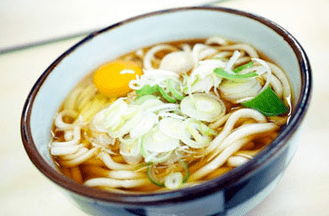
Although Miso soup is very spicy, it can be sweetened with various spices.For example:
- soy sauce
- a little lemon juice
- Japanese Worcestershire Sauce
- A few drops of sesame oil
- A little ginger and/or red pepper powder.
- You can also cut fresh ginger and/or bitter pepper in thin slices and leave it in the soup.
Recommendation:You will need to go to a Asian store for many of the ingredients, but you can buy fresh leeks, mushrooms, alabaşlar and the like from regional markets.
Tofu and other soy products are now produced in other countries.
Japaneseto eat:
- rice, fish (raw and cooked), vegetables, soy and seaweed
- small portions
- Various foods (Different up to 30 per day)
- Soup, fish, rice, vegetables for breakfast
- Fresh seasonal unrelated foods
I don't eat almost sweet, I don't eat bread
Mostly Drink Green Tea
do not fry in oil, use only a little vegetable oil for frying
Walk and bike a lot
First three products
Rice/Fish (Sea Moss)/Soy (Tofu)
Drink: green tea
Another secret from Japanese women
Do you want your waist to be 12 cm thin?- If your answer is yes, do the following breathing exercise!
Important!
- Do this every day!
- Do it before breakfast!
- Never rush!
- Place your feet in a comfortable distance.The knees naturally “look” forward.
- Shift your body weight to your back leg and straighten your front leg.
- Breathe for 3 seconds.
- Breathe for 7 seconds.Loosen your muscles.Download your hands.
Initially do the exercise for 3 minutes, then increase the time to 10 minutes.















































































